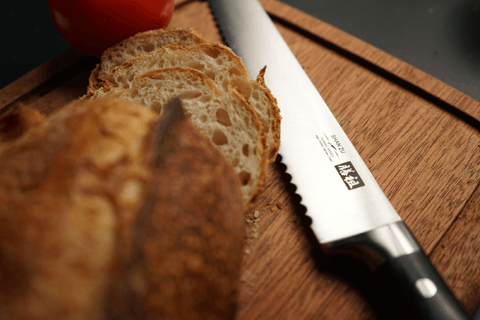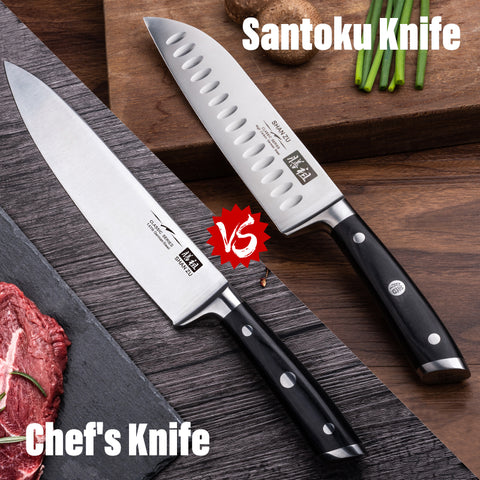Sharp knives can cut your prep time in half, and, believe it or not, they're actually safer than dull knives—they're less likely to slip.
You will need a sharpening stone, also known as a whetstone, a bowl of water large enough to hold the stone, a kitchen towel , a flat, stable surface, a dull knife and a honing steel or ceramic sharpening rod.
- Step 1.
Soak the sharpening stone in a bowl of water for 5 minutes. Avoid oil stones-they are difficult to use correctly, even for culinary professionals.
- Step 2.
Remove the stone from the water and place it on a towel on a stable surface. Make sure the coarse side faces up.
- Step 3.
If you're sharpening a chef's knife, hold it semi-parallel against the stone at a 20-degree angle with one hand on the handle and the other on the top part of the blade. The 20-degree angle should be about the width of a matchbook, or even smaller for knives that require a thinner edge.
- Step 4.
Starting with the base of the knife, called the heel, draw the blade sideways along the stone while pulling the blade toward you so that the point of contact slides from the heel to the tip. Apply moderate pressure, especially when working on this coarse side of the stone. Keep your fingertips on the top edge of the blade to maintain the angle.
- Step 5.
Repeat this motion in the following pattern:
10 times on each side, then 5, then 3, then single strokes alternating between right and left 6 times. You should be able to feel with your fingernail-carefully!-that a rough burr has developed on the edge. Knives with thinner edges might take slightly longer to sharpen; they typically are made from harder carbon steel than the softer steel that most Western chef's knives are made from.
- Step 6.
Turn the water stone over to fine-tune and "polish" the edge. Repeat the sharpening motion with a slightly lighter touch. A coarse edge wears more quickly than a polished edge, but is good for slicing items that have a tough skin but delicate flesh, like tomatoes and fish.
- Step 7.
Rinse the blade.
- Step 8.
For an even more polished edge, finish up with a few draws along a honing steel, making sure to draw the blade at the same angle as before and with a similar sharpening motion.Now slice away with your new samurai-sharp blade!





Commentaires (0)
Il n'y a pas de commentaires pour cet article. Soyez le premier à laisser un message !